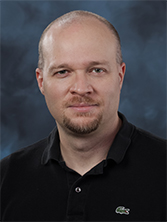Seminars
Dr. Miroslav Stoyanov
Computer Science and Mathematics Division
Oak Ridge National Laboratory
Surrogate Modeling Approach for Crack Pattern Prediction Using Sparse Grids

ABSTRACT: Risk assessment in structural mechanics often times depends on the statistical analysis of crack formation and propagation, which in turn relies on complex and computationally expensive models. A common approach to alleviating the computational burden is to use fast surrogates models; however, the discontinuous nature of the crack patterns creates massive challenges for standard approximation techniques. We introduce a two stage approach, where we utilize a small set of random samples (i.e., solutions to the expensive model for a different set of input parameters) and we construct a reduced basis representation of the crack patterns. The basis gives us a set of functions that capture the variability of the displacement field for different values of the model parameters. Then, we employ a hierarchical domain decomposition of the parameter space using an adaptive sparse grids approach with piece-wise constant functions. Neither the reduced basis, nor the sparse grid require assumptions on the regularity of the model response in either parameter space or real space. The methodology has been implemented using the Tasmanian toolkit for uncertainty quantification.
BIOGRAPHY: Dr. Miroslav Stoyanov got his Ph.D. from Virginia Tech in 2009. After a post-doc at Florida State University, Dr. Stoyanov joined ORNL in 2012. His areas of research involve surrogate modeling, uncertainty quantification, high-dimensional approximation, and supercomputing. Dr. Stoyanov is also the lead developer of the ORNL Toolkit for Adaptive Stochastic Modeling and Non-Intrusive Approximation (Tasmanian).